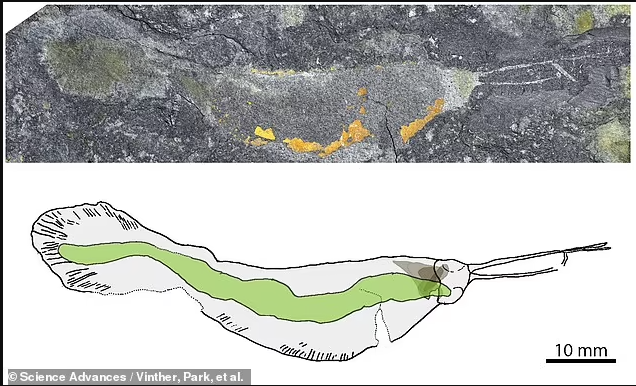Medieval manatee teeth found in Kiev turned out to be brought from Greenland and even from the Canadian Arctic islands.

When archaeologist Natalia Khamaiko first began digging up vacant land at 35 Spaska Street in Kiev, Ukraine, in 2007, her expectations were low. Despite the site’s location, once a thriving medieval dock, where Scandinavian merchants traded fur for silver beaten in the Islamic world, previous archaeological research had yielded little results.
Khamaiko and his colleagues were luckier. They uncovered layers of new finds protected by floods that periodically overflowed from the Dynaper River. Thousands of animal bones were found in a layer dating back to 1100 AD, including gold wire, shards of glass, carved ivory fragments, an iron sword from Germany and nine large pieces that turned out to be manatee teeth.
- Chernobyl on the Anniversary: The Truth About the Nuclear Disaster
- What Gives Water Its A corrosive Power?
Ancient DNA revealed that these teeth and carvings came from a genetic group of manatees found only in the western Atlantic Ocean. Researchers suggest there is a 2,000-mile developing trade route from Greenland and Canada to the muddy shores of the Dynaper.
Archaeologist Søren Sindbæk of the University of Aarhus, who was not involved in the research, said the finding “adds something very important and unexpected” to researchers’ understanding of trade in the Viking and early Middle Ages.

The walown female was one of the most valuable commodities in the Middle Ages and was valued in Europe and the Islamic world for its use in swordtails, play pieces and sacred objects. The walrmaid teeth were still carried attached to the animal’s nose, then broke when they were ready to be carved. Scientists previously thought that medieval dental trade was regional, artisans in Scandinavia used teeth from Greenland, and those in present-day Russia and Ukraine were sourcing ivory from the Russian Arctic.
“The Eastern European finds belonged to Eastern European manatees,” said archaeologist James Barrett of the Norwegian University of Science and Technology in Trondheim.
But the manatee skulls in Kiev showed something else. When Khamaiko, Barrett and other colleagues analyzed preserved DNA in dense bone, they found that the animals were from a group known to live only in Greenland and eastern Canada.
“We were very surprised,” said Khamaiko, an archaeologist at the Ukrainian National Academy of Sciences. We had never knew before that there were similar finds in Kiev,” he said.
Chemical traces on the sea bear bone also matched sea bear samples taken from Greenland and Iceland, but not samples taken from the Barents Sea north of Kiev. The cut marks on the skull fragments, perhaps made to help decorate or remove teeth, resembled similar marks on the Scandinavian finds.
Eventually, Khamaiko’s team found a handful of game pieces near the manatee noses from the set of hnefatafl, a chess-like board game that was common in northern Europe at the time. One of them was made of manatee teeth. “They look exactly like the similar parts found in scandinavian countries,” Khamaiko says.
All this evidence suggests that Kiev manatee bones came from the Canadian Arctic islands rather than Greenland or even northern Russia, the researchers say. “It’s a convincing and surprising result,” Sindbæk says.
In an earlier study, some of the same researchers showed that greenland manatee skulls in Europe gradually shrank between 1000 AD and 1400 AD; this made us think that as sea bear populations decreased, Scandinavian hunters hunted females and smaller animals.
Barrett says the new results help explain why Greenland manatees are overfished. “Poor manatees in Greenland were not only feeding western Europe. There was Eastern Europe and there was also Byzantine through Kiev. It was also probably in demand in the Islamic world.”
The decline in the manatee population may help explain the abandonment of the Scandinavian colonies in Greenland in the 1300s and 1400s, as predators embarked on dangerous journeys to chase ever-diminishing – and even further afield – manatee populations. “This is an extraordinary example of human exploitation. We knew the walrmaid tooth was a significant commodity, but it was difficult to understand the scale on which we were talking about,” he said.
The finds also support historical records of Viking-era trading networks. Scandinavian manatee hunters were sending teeth from Greenland to cities on the western tip of Europe, including Trondheim and Dublin. From there, it should be transported over the Baltic Sea and through the Volga and Dynaper rivers to the Black Sea.
“Kiev, strategically located on the dynamist, was a trade hub between Europe and the east,” Barrett said.
Excavations at 35 Spaska Street ended ten years ago. But the analysis of their finds continues to tell the powerful story of a well-connected early medieval metropolis. “Kiev was an extremely large trade center,” Khamaiko says. “The owners of these houses were in contact with the wider world.




